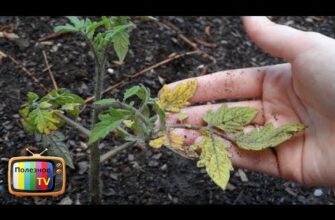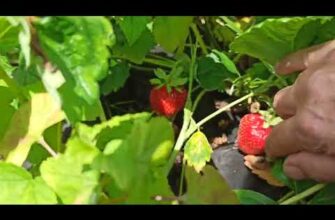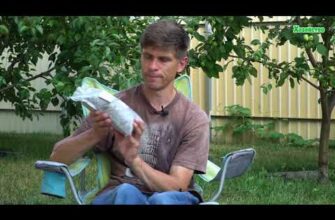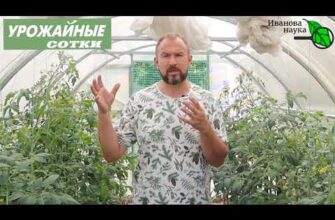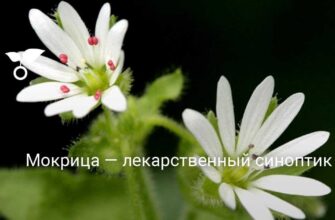- Виды голландских томатов
- Высокорослые гибриды
- Низкорослые гибриды
- Выбор гибридов для выращивания
- Высокорослые гибриды
- Низкорослые гибриды
- Как правильно сажать голландские томаты
- Выбор места для посадки
- Подготовка почвы
- Способ посадки
- Уход за голландскими томатами
- Уход за голландскими томатами
- 1. Выбор места и посадка
- 2. Полив и удобрение
- 3. Подвязка и обрезка
- 4. Защита от вредителей и болезней
- Агротехника выращивания голландских томатов
- Особенности полива голландских томатов
- Удобрение голландских томатов
- Борьба с вредителями голландских томатов
- Основные вредители
- Профилактика и контроль
- Болезни голландских томатов и их профилактика
- 1. Буряковость
- 2. Фузариоз
- 3. Манная роса
- 4. Вирусное поражение
- Сбор и хранение голландских томатов
- Лучшие рецепты с голландскими томатами
- 1. Салат «Капрезе»
- 2. Томатный суп
- 3. Томатный соус
- 4. Томатно-огуречный салат
- Вопрос-ответ:
- Какие гибриды томатов из ТОП-11 относятся к высокорослым?
- Какие гибриды томатов из ТОП-11 относятся к низкорослым?
- Какой вкус имеют гибриды томатов из ТОП-11?
- Какие особенности имеют голландские томаты?
- Можно ли выращивать голландские томаты в домашних условиях?
- Видео:
- НЕ ДЕЛАЙТЕ ГЛУПОСТЕЙ ПРИ ФОРМИРОВКЕ НИЗКОРОСЛЫХ ТОМАТОВ!

Голландия славится своими томатами высочайшего качества и неповторимым вкусом. В этой статье мы предлагаем вам ознакомиться с ТОП-11 гибридами голландских томатов, которые отличаются как высокорослыми, так и низкорослыми сортами.
Высокорослые голландские томаты отличаются своим внушительным размером и высокой урожайностью. Они идеально подходят для выращивания на открытом грунте и в парниках. Среди них встречаются такие сорта, как «Большеголовый король», «Желтый великан» и «Красная гигантская». Эти томаты не только красивы и впечатляющи, но и обладают непревзойденным вкусом и ароматом.
Низкорослые голландские томаты отличаются компактным размером и меньшей высотой, что делает их идеальными для выращивания в горшках или на подоконниках. Среди них можно выделить такие сорта, как «Черри томат», «Мини-персик» и «Сливовидный». Несмотря на свои небольшие размеры, эти томаты удивительно вкусны и сочны.
Голландские гибриды томатов являются идеальным выбором для любителей этого вкусного и полезного овоща. Независимо от того, предпочитаете ли вы высокорослые или низкорослые сорта, голландские томаты порадуют вас своим непревзойденным качеством и вкусом.
Виды голландских томатов
Голландские томаты представлены различными видами, включающими в себя как высокорослые, так и низкорослые гибриды. В этом топ-11 выбраны самые вкусные и популярные сорта, которые радуют своим вкусом и урожайностью.
Высокорослые гибриды
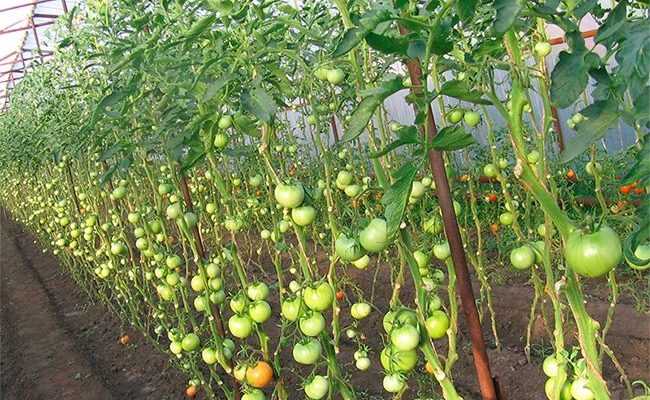
1. Голландский томат «Амстердам» — это сорт среднего срока созревания, который отличается высокой урожайностью и превосходным вкусом. Плоды крупные, мясистые и сладкие.
2. Сорт «Ден Хаг» имеет длинные и плотные плоды, которые отлично подходят для консервирования и приготовления соусов. Вкус у этих томатов насыщенный и сладкий.
3. «Роттердам» — это голландский томат с прекрасным вкусом и декоративными кистями плодов. Он обладает высокой устойчивостью к болезням и хорошо переносит транспортировку.
Низкорослые гибриды
1. «Дельфт» — это низкорослый голландский томат с яркими оранжевыми плодами. Он отличается высокой урожайностью и хорошей устойчивостью к болезням.
2. Сорт «Лейден» имеет маленькие, но очень сладкие плоды. Он отлично подходит для выращивания в горшках и на балконах.
3. «Утрехт» — это низкорослый томат с розовыми плодами, которые отличаются особенно нежным и сладким вкусом. Он идеально подходит для выращивания в теплицах и на открытом грунте.
Выбрав один из этих голландских томатов, вы обязательно сможете насладиться вкусом и урожайностью этого замечательного овоща.
Выбор гибридов для выращивания
При выборе гибридов томатов для выращивания следует учитывать как их высокорослую, так и низкорослую разновидность. В ТОП-11 голландских гибридов входят как высокорослые, так и низкорослые сорта, обладающие неповторимым вкусом.
Высокорослые гибриды
Высокорослые гибриды томатов имеют больший размер и требуют поддержки в виде опоры или сетки. Они характеризуются высокой урожайностью, крупными плодами и интенсивным ростом. Такие гибриды идеально подходят для выращивания в открытом грунте, в теплицах или на балконах с доступом к солнечному свету.
Низкорослые гибриды
Низкорослые гибриды томатов отличаются компактным размером и отсутствием необходимости в поддержке. Они занимают меньше места, поэтому идеальны для выращивания в ограниченном пространстве. Низкорослые гибриды также хорошо подходят для выращивания в горшках или контейнерах на балконе или окне.
Важно помнить, что выбор гибридов томатов для выращивания зависит от ваших предпочтений и условий выращивания. Высокорослые гибриды подойдут для тех, кто предпочитает большие плоды и имеет достаточно места для их выращивания, а низкорослые гибриды будут лучшим выбором для тех, кто ограничен в пространстве или хочет выращивать томаты в горшках.
Как правильно сажать голландские томаты
Голландские томаты являются одними из самых вкуснейших и популярных гибридов, которые можно выращивать в саду или на огороде. Чтобы получить богатый урожай этих высокорослых растений, необходимо правильно сажать и ухаживать за ними.
Выбор места для посадки
Для выращивания голландских томатов необходимо выбрать солнечное и защищенное от ветра место. Они любят тепло, поэтому идеально подойдет южная или юго-западная сторона сада или огорода. Земля должна быть хорошо дренированной, чтобы предотвратить застой воды и гниение корней.
Подготовка почвы
Перед посадкой голландских томатов необходимо подготовить почву. Она должна быть плодородной и обогащенной органическими веществами. Рекомендуется добавить компост или перегной, чтобы улучшить структуру почвы и обеспечить растения необходимыми питательными веществами.
Способ посадки

Гибриды голландских томатов лучше всего сажать на расстоянии около 60 см друг от друга. Это обеспечит растениям достаточно места для роста и доступа к свету. Глубина посадки должна быть такой, чтобы корни находились на уровне почвы, а нижние листья не касались земли.
Уход за голландскими томатами
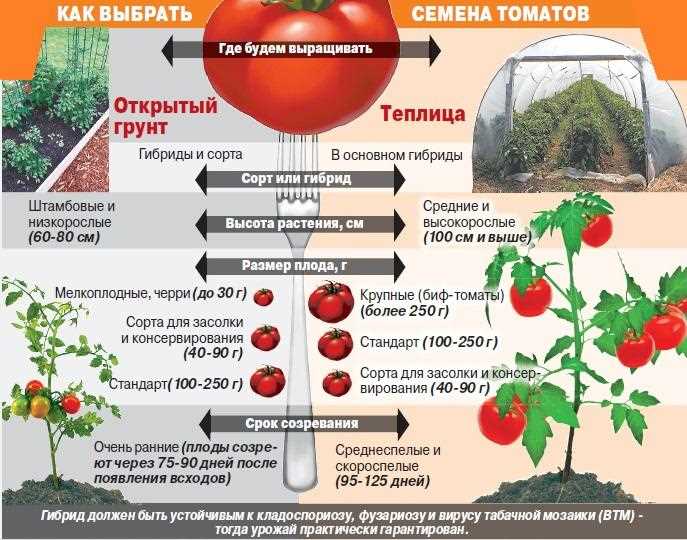
После посадки необходимо регулярно поливать и подкармливать голландские томаты. Они требуют влажной почвы, особенно в период цветения и созревания плодов. Также рекомендуется поддерживать растения с помощью опор, чтобы предотвратить ломку ветвей под тяжестью плодов. Регулярное удаление сорняков и обработка от вредителей поможет голландским томатам расти здоровыми и приносить обильный урожай.
Уход за голландскими томатами
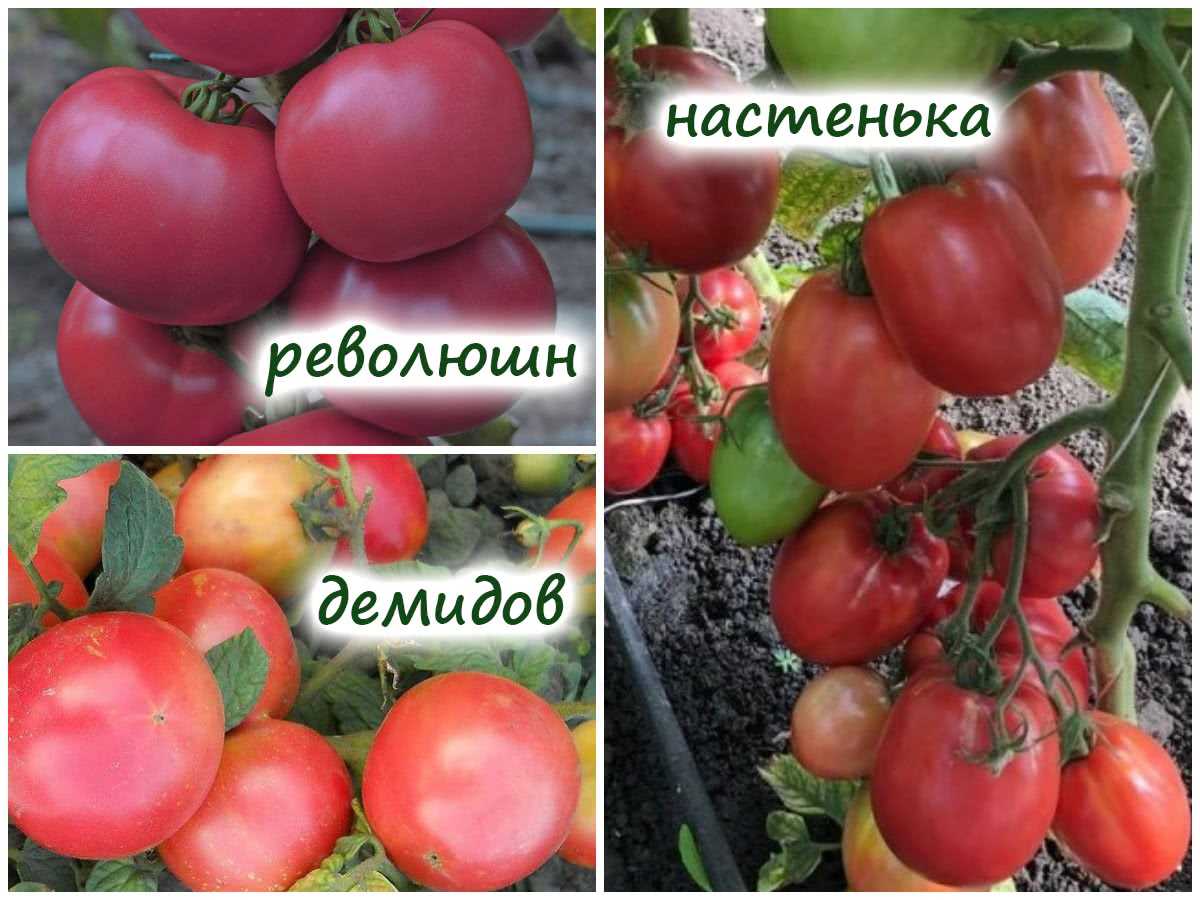
1. Выбор места и посадка
Для успешного выращивания голландских томатов, как низкорослых, так и высокорослых гибридов, необходимо выбрать подходящее место. Томаты предпочитают солнечные места с хорошей вентиляцией.
При посадке томатов важно учесть их размеры и характер роста. Низкорослые сорта можно высаживать поближе друг к другу, в то время как высокорослые нуждаются в большем пространстве между растениями.
2. Полив и удобрение
Регулярный полив является важной составляющей ухода за голландскими томатами. Растения нуждаются во влажной почве, но не переносят излишнюю влагу. Идеально поддерживать постоянное увлажнение земли, избегая пересыхания или переувлажнения.
Кроме того, растения нуждаются в удобрениях для нормального роста и развития. Рекомендуется использовать комплексные удобрения, богатые макро- и микроэлементами, чтобы обеспечить растения всем необходимым для продуктивного плодоношения.
3. Подвязка и обрезка
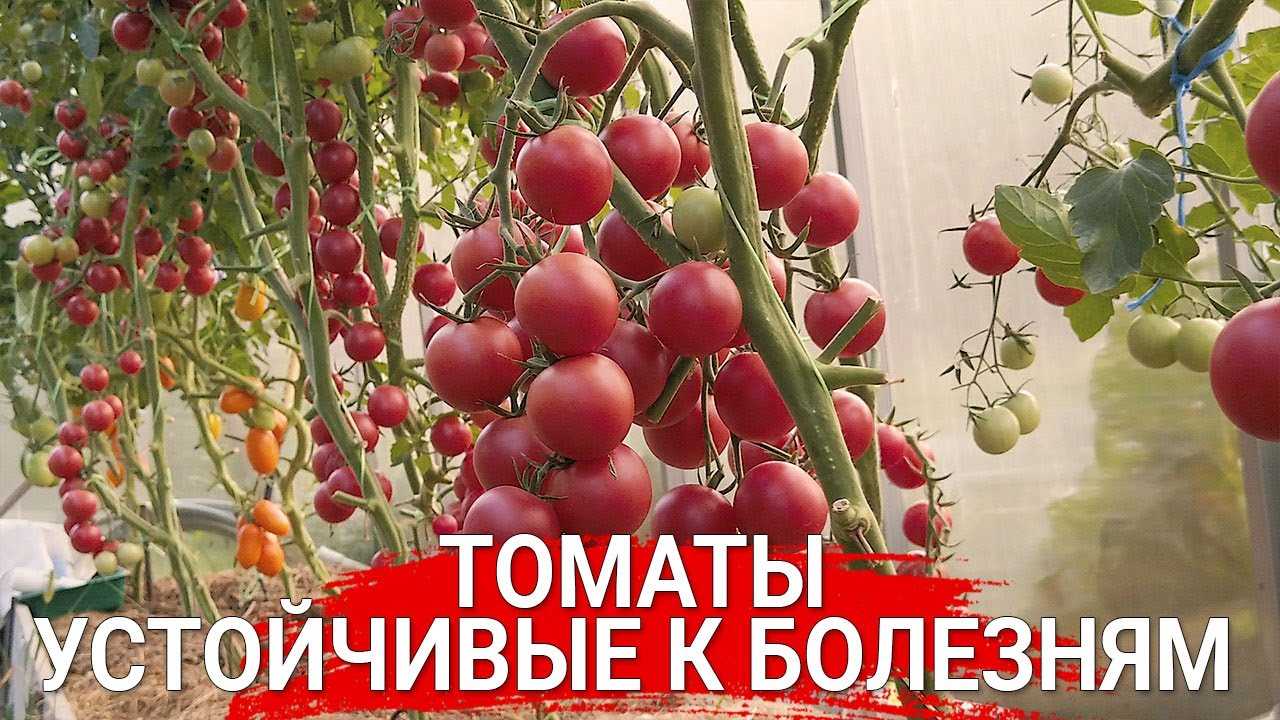
Высокорослые голландские томаты требуют подвязки и обрезки для поддержки и формирования правильной структуры растений. При помощи подвязки можно предотвратить поломку побегов и плодов под их собственным весом.
Обрезка также необходима для удаления лишних побегов и стимуляции роста плодов. Рекомендуется удалять боковые побеги и нижние листья, чтобы обеспечить хорошую циркуляцию воздуха и света внутри растения.
4. Защита от вредителей и болезней
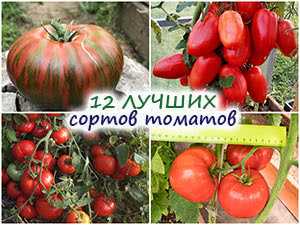
Голландские томаты, как и любые другие растения, подвержены атакам различных вредителей и заболеваний. Важно регулярно осматривать растения и принимать меры по предотвращению и борьбе с вредителями.
Для профилактики рекомендуется использовать средства защиты растений, такие как инсектициды и фунгициды. Также полезно собирать и уничтожать пораженные части растений, чтобы предотвратить распространение болезней.
Агротехника выращивания голландских томатов
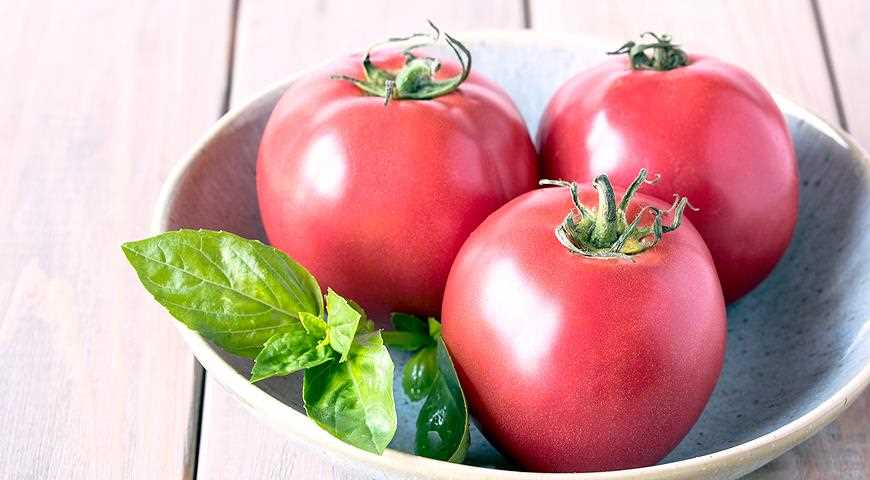
Выращивание голландских томатов является сложным и ответственным процессом. Как для высокорослых, так и для низкорослых гибридов, необходимо создать оптимальные условия для их роста и развития.
Первым шагом в агротехнике выращивания голландских томатов является выбор подходящего сорта. ТОП-11 гибридов предлагает разнообразные варианты, от низкорослых до высокорослых, с различными характеристиками и вкусовыми качествами.
Для успешного выращивания голландских томатов необходимо обеспечить им достаточное количество света. Низкорослые сорта могут обходиться несколькими часами прямого солнечного света в день, в то время как высокорослые гибриды требуют более интенсивного освещения.
Оптимальная температура окружающей среды также играет важную роль в агротехнике выращивания голландских томатов. Для низкорослых сортов рекомендуется поддерживать температуру в пределах 20-24 градусов Цельсия, в то время как высокорослые гибриды могут быть более требовательными и требовать более устойчивой температурной среды.
Правильный полив также является важным аспектом агротехники выращивания голландских томатов. Низкорослые сорта нуждаются в умеренном поливе, чтобы избежать переувлажнения почвы, в то время как высокорослые гибриды могут требовать более интенсивного полива.
Кроме того, необходимо регулярно удалять сорняки и контролировать наличие вредителей, чтобы обеспечить здоровый рост и развитие голландских томатов.
Так стоп!!! Вы всё ещё не подписаны на наши каналы в Телеграмм и Дзен? Посмотрите: ТГ - (@historyfantasydetectivechat) и Дзен (https://dzen.ru/myshortsstorys)
Следуя этим основным принципам агротехники, можно достигнуть высоких результатов в выращивании голландских томатов, независимо от их высоты и вкусовых качеств.
Особенности полива голландских томатов
Голландские томаты из топ-11 вкуснейших гибридов, будь то высокорослые или низкорослые, требуют особого подхода к поливу. Правильное обеспечение влагой является важным условием для получения качественного урожая.
Один из главных секретов успешного полива голландских томатов – это регулярность. Томаты нуждаются в постоянном доступе к влаге, поэтому рекомендуется поливать растения несколько раз в неделю. Однако стоит помнить, что переувлажнение может привести к гниению корней, поэтому оптимальное количество воды следует определить опытным путем.
Еще одна важная особенность полива голландских томатов – это подача влаги под корень растений. Система капельного полива является наиболее эффективным и удобным способом обеспечения растений влагой. Она позволяет точно дозировать количество воды и направлять ее непосредственно в зону корней, минимизируя потери и сохраняя почву в оптимальном состоянии.
Кроме того, рекомендуется использовать качественную воду для полива голландских томатов. Отсутствие хлора, избыток солей и других негативных примесей в воде способствует здоровому росту растений и улучшает вкус и качество плодов. В случае необходимости можно использовать фильтры или специальные системы очистки воды.
Удобрение голландских томатов
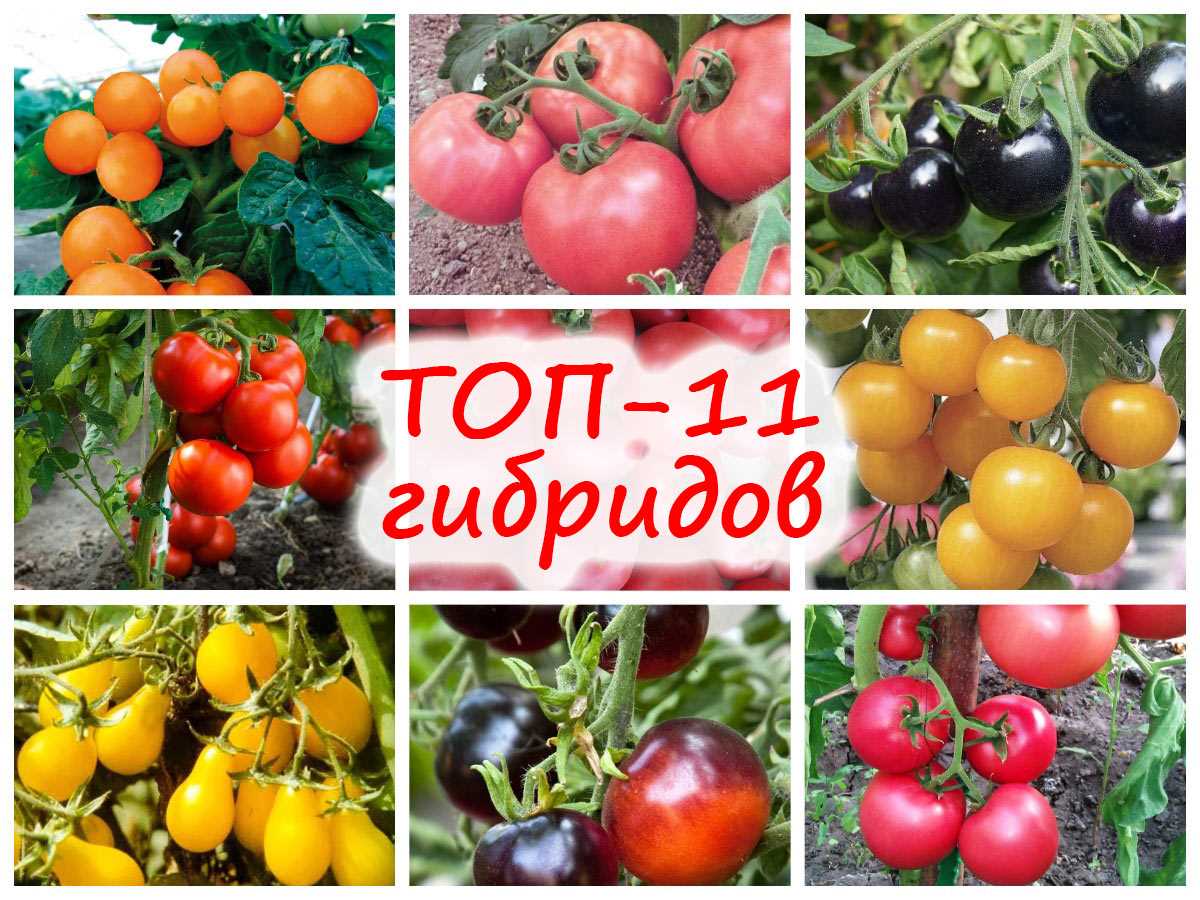
Для успешного выращивания голландских томатов, в том числе и топ-11 высокорослых и низкорослых вкуснейших гибридов, необходимо правильно удобрять растения. Регулярное подкормочное питание поможет достичь высоких урожаев и сохранить качество плодов.
Основным источником питательных веществ для голландских томатов является органическое удобрение. Рекомендуется использовать компостированный навоз или перегной. Органика обладает множеством полезных микроэлементов и способствует развитию корневой системы растений.
Важным элементом удобрения голландских томатов является азот. Он необходим для усиления роста зеленой массы и формирования крупных плодов. Рекомендуется использовать азотные удобрения, такие как аммиачная селитра или мочевина. Однако, не следует злоупотреблять азотными удобрениями, так как это может привести к увеличению зеленой массы и ухудшению качества плодов.
Для обеспечения хорошего цветения и формирования крупных плодов необходимо также удобрять голландские томаты фосфором и калием. Фосфор способствует развитию корневой системы и цветению растений, а калий улучшает качество и сохранность плодов. Рекомендуется использовать специальные удобрения, содержащие фосфор и калий, в соответствии с инструкцией производителя.
Важно помнить о необходимости соблюдения регулярности и дозировки при удобрении голландских томатов. Переборщить с удобрениями может привести к перегрузке растений питательными веществами и ухудшению их состояния. Поэтому, рекомендуется следить за состоянием растений и регулярно проводить анализ почвы, чтобы определить нужную дозировку удобрений.
Борьба с вредителями голландских томатов
Выращивание голландских томатов — это сложный процесс, требующий постоянного контроля и борьбы с вредителями, которые могут нанести серьезный ущерб урожаю. Вкуснейшие сорта голландских томатов из топ-11 высокорослых гибридов являются особенно привлекательными для вредителей, поэтому необходимо принять меры для их защиты.
Основные вредители
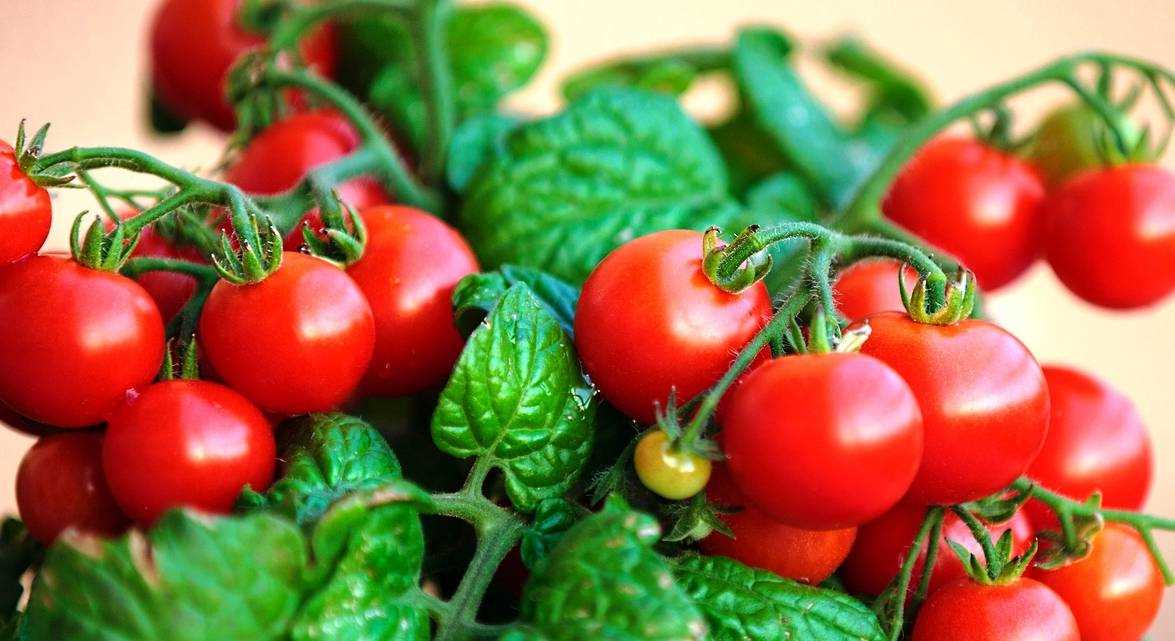
Одним из основных вредителей голландских томатов являются трипсы. Эти маленькие насекомые питаются соками растений и могут вызывать серьезные повреждения. Для борьбы с ними рекомендуется использовать специальные инсектициды, а также проводить регулярные обследования растений для выявления и уничтожения возможных зараженных экземпляров.
Еще одним опасным вредителем является белая муха. Эти насекомые также питаются соками растений и способны разносить различные инфекции. Для борьбы с белой мухой можно использовать специальные липкие ловушки или биологические препараты, которые не наносят вреда растениям и окружающей среде.
Профилактика и контроль
Для предотвращения заражения голландских томатов вредителями, необходимо регулярно проводить обработку растений специальными препаратами. Также важно соблюдать санитарные нормы и поддерживать чистоту в теплице или томатнике. Удаление зараженных растений и постоянное обследование растений поможет своевременно выявить и предотвратить распространение вредителей.
Таким образом, борьба с вредителями голландских томатов является неотъемлемой частью процесса выращивания вкуснейших сортов из топ-11 высокорослых гибридов. Постоянный контроль и предпринимаемые меры помогут сохранить здоровье растений и достичь высокого урожая.
Болезни голландских томатов и их профилактика

Голландские томаты, особенно гибриды из топ-11 низкорослых и вкуснейших сортов, пользуются огромной популярностью. Однако, как и любые другие растения, они подвержены различным болезням, которые могут негативно сказаться на их урожайности и качестве.
1. Буряковость
Буряковость — это одна из наиболее распространенных болезней голландских томатов. Она проявляется в виде появления коричневых пятен на листьях и стеблях растения. Для профилактики этой болезни рекомендуется регулярно обрабатывать растения специальными препаратами, а также следить за правильным поливом и вентиляцией теплицы.
2. Фузариоз
Фузариоз — это опасная болезнь, которая может поразить гибриды голландских томатов. При этой болезни растения начинают увядать, пожелтевать и гибнуть. Чтобы предотвратить фузариоз, рекомендуется выдерживать правильный режим полива и удобрения, а также обрабатывать растения антифузариозными препаратами.
3. Манная роса
Манная роса — это грибковая болезнь, которая проявляется в виде белых пятен на листьях и плодах голландских томатов. Чтобы избежать поражения этой болезнью, следует регулярно проводить профилактические обработки растений фунгицидами, а также обеспечивать хорошую вентиляцию в теплице.
4. Вирусное поражение
Голландские томаты могут быть подвержены вирусным заболеваниям, таким как клубеньковость и мозаика. Для профилактики вирусного поражения рекомендуется использовать здоровые семена и регулярно осуществлять дезинфекцию инструментов и поверхностей, соприкасающихся с растениями.
В целом, для профилактики болезней голландских томатов необходимо соблюдать правильный режим полива, удобрения и обработки растений специальными препаратами. Также важно обеспечивать хорошую вентиляцию и санитарное состояние в теплице. Следуя этим рекомендациям, можно минимизировать риск возникновения болезней и обеспечить здоровый рост и развитие голландских томатов.
Сбор и хранение голландских томатов
Голландские томаты являются одними из вкуснейших и популярных сортов в мире. Благодаря своим высоким вкусовым качествам и удивительным гибридам, они завоевывают сердца многих любителей этого овоща. Но чтобы насладиться их вкусом дольше, необходимо правильно собирать и хранить голландские томаты.
Когда голландские томаты достигают оптимальной степени спелости, они готовы к сбору. Наиболее популярным методом сбора является ручной, при котором томаты аккуратно отрываются от растения. Рекомендуется носить перчатки, чтобы избежать повреждения плодов и защитить руки от контакта с растением.
После сбора необходимо правильно хранить голландские томаты, чтобы они сохраняли свежесть и вкус как можно дольше. Томаты следует хранить при температуре от 10 до 13 градусов Цельсия, чтобы они не перегревались или не замерзали. Также важно обеспечить хорошую вентиляцию, чтобы предотвратить скопление влаги, которая может привести к гниению плодов.
Рекомендуемые способы хранения голландских томатов:
- В холодильнике: томаты можно хранить в холодильнике, но они не должны быть в контакте с другими продуктами, так как могут принять их запахи. Лучше всего использовать пластиковую или стеклянную емкость с крышкой.
- На кухне: если нет возможности хранить томаты в холодильнике, их можно оставить на кухне при комнатной температуре. Однако, следует убедиться, что они не подвергаются прямому солнечному свету или слишком высоким температурам.
- В лотке: можно разложить томаты в один слой в лотке или ящике, предварительно уложив их в бумажные или пластиковые мешочки. Это поможет избежать соприкосновения томатов и уменьшить риск повреждения плодов.
Следуя этим простым рекомендациям, вы сможете наслаждаться свежими и вкусными голландскими томатами даже после сбора. Приготовьте самые вкусные блюда с этими низкорослыми гибридами, которые вы найдете в нашем ТОП-11 голландских томатов!
Лучшие рецепты с голландскими томатами
Голландские томаты являются одними из самых вкуснейших сортов томатов, которые можно найти на рынке. Они отличаются не только своим уникальным вкусом, но и высокой урожайностью. Благодаря этому, голландские томаты являются идеальным выбором для приготовления различных блюд.
1. Салат «Капрезе»

Салат «Капрезе» — это классическое итальянское блюдо, которое готовится из голландских томатов, моцареллы и свежего базилика. Приготовление очень простое — томаты и моцареллу нарезаются кружочками, затем они перекладываются слоями на тарелку и посыпаются измельченным базиликом. Блюдо можно полить оливковым маслом и подавать с грибным хлебом.
2. Томатный суп
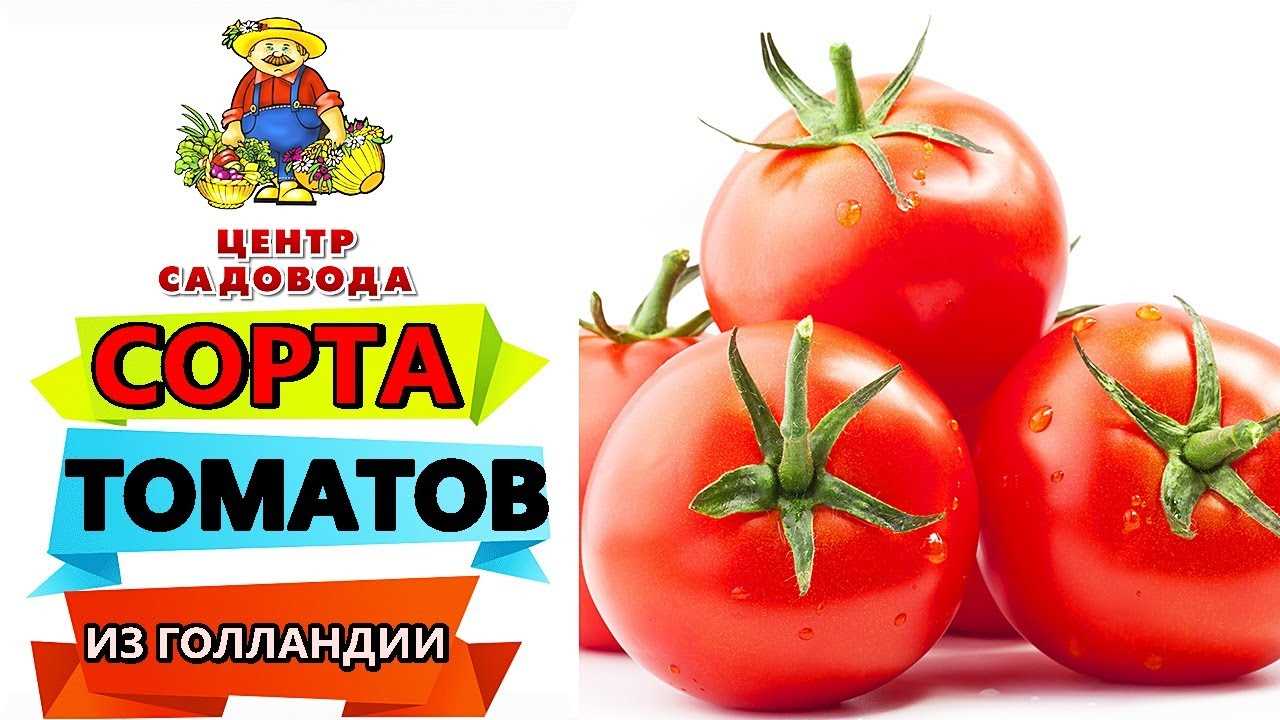
Голландские томаты отлично подходят для приготовления томатного супа. Для этого рецепта вам понадобятся томаты, лук, чеснок, оливковое масло и специи. Лук и чеснок обжариваются на оливковом масле, затем добавляются нарезанные томаты и варятся до мягкости. После этого суп размельчается блендером до однородной консистенции. Подавать можно с сухариками или сметаной.
3. Томатный соус
Томатный соус — это отличный выбор для приготовления пасты или пиццы. Для его приготовления вам понадобятся голландские томаты, лук, чеснок, оливковое масло и специи. Лук и чеснок обжариваются на оливковом масле, затем добавляются нарезанные томаты и варятся до мягкости. После этого соус размельчается блендером до однородной консистенции. Получившийся соус можно использовать для приготовления различных блюд.
4. Томатно-огуречный салат
Этот свежий и освежающий салат идеально подходит для летнего времени года. Для его приготовления вам понадобятся голландские томаты, огурцы, лук, зелень и оливковое масло. Томаты и огурцы нарезаются кубиками, затем добавляются нарезанный лук и зелень. Все ингредиенты смешиваются и заправляются оливковым маслом. Подавать можно к мясу или отдельным блюдом.
Таким образом, голландские томаты являются отличным выбором для приготовления разнообразных блюд. Они отличаются своим уникальным вкусом и высокой урожайностью, что делает их одними из лучших сортов томатов для использования в кулинарии.
Вопрос-ответ:
Какие гибриды томатов из ТОП-11 относятся к высокорослым?
Из ТОП-11 гибридов томатов, к высокорослым относятся: «Гранат», «Квант», «Штамбовский желтый», «Трансильвания», «Геркулес».
Какие гибриды томатов из ТОП-11 относятся к низкорослым?
Из ТОП-11 гибридов томатов, к низкорослым относятся: «Черри Бум», «Лидия», «Мармарис», «Болеро», «Касатка».
Какой вкус имеют гибриды томатов из ТОП-11?
Гибриды томатов из ТОП-11 отличаются разнообразием вкусовых качеств. Некоторые имеют сладкий вкус, другие — кисловатый, а некоторые — сочетание сладкого и кислого.
Какие особенности имеют голландские томаты?
Голландские томаты отличаются высокой урожайностью, устойчивостью к болезням, длительным сроком хранения и привлекательным внешним видом. Они также обладают отличным вкусом и ароматом.
Можно ли выращивать голландские томаты в домашних условиях?
Да, голландские томаты можно выращивать в домашних условиях. Для этого необходимо обеспечить им достаточное количество света, тепла, влаги и питательных веществ. Также важно выбрать подходящий сорт для выращивания в доме.


